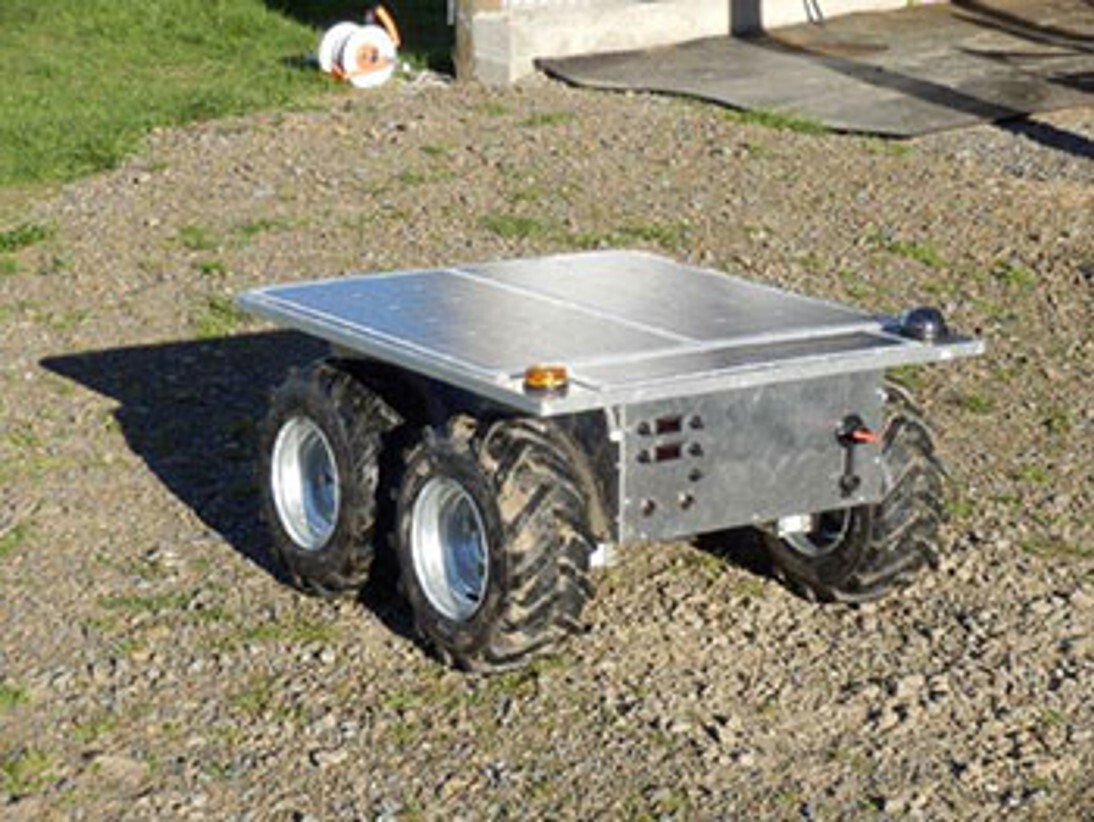We tend to think of livestock farmers as "one man and his dog," but if AgResearch of New Zealand has anything to say, that pair may have to move over to include a robot. A team led by Dr. Andrew Manderson is developing AgriRover, an agricultural robot inspired by NASA’s Mars rovers. It’s a proof-of-concept prototype designed to show how robots can make life easier and more productive for livestock farmers.
The basic idea behind AgriRover is precision agriculture. That is, instead of using conventional methods of tending to entire fields at one time, the farmer uses robotics and other technologies to deal with problems on a much smaller scale.
A livestock paddock, for example, may look uniform, but under the grass there’s a great deal of variability of soil and conditions. Levels of potassium, sulfur, and acidity can be very different even within a single square meter. The main reason is that livestock don’t pee or poop in anything like a uniform pattern, as anyone who’s seen a lawn burned by a dog can attest. Weeds also tend to grow in clumps, and a paddock can have many dry or sodden patches.

Ideally, paddocks can be made healthier and more productive if they can be surveyed on a very small scale and each problem area addressed with individual treatment. That is where AgriRover comes in.
"We started this project in 2012 and presented the first prototypes at the [Fertilizer and Lime Research Centre] conference back in February," says Manderson. "We've come a long way since then, and have had a functional rover out in the paddock since April."
Manderson sees a practical version of AgriRover in use within 5 to 10 years. Intended to operate day and night in all weather, the idea is to have a robot that can autonomously navigate its way around a paddock, send back real-time data on each area, provide on-the-spot treatments or dye markings for each problem encountered, generate prescription maps, and return to base for recharging and resupply.
The prototype, the third in a series, was built with off-the-shelf components – many originally developed for motorized wheelchairs. AgriRover is powered by lithium phosphate batteries supplemented with a solar panel for additional range during daylight hours. It’s also designed to be small enough to go under two-wire fences and gates.
"This works in all weather, all of the time, quietly going about its tasks without creating extra jobs for the farmer. It’s designed to be easy to operate, and will report results as needed to a cell phone or computer," says Dr. Manderson.
The tricky bit of the development was coming up with a drive system that was both simple and able to maneuver in a muddy paddock. In addition, speed in traversing the paddock had to weighed against battery duration and the need to survey the area efficiently. The result is a 150-kg (330-lb) robot with four 180-watt motors capable of handling uneven ground at 5 km/h (3 mph) and small slopes of less than 20 degrees. Guidance is by internal dead reckoning, relative position sensors (such as laser or ultrasonics) and other aids, including buried magnets and wires.
The chassis is steel for greater strength, which is important, given the project’s tight budget. "We accidentally dropped it off the back of a ute and it fell on its lid," says Manderson. "We just turned it over and away it went again."
According to Manderson, the biggest hurdle still to be overcome is finding a way to handle urine patches and small weed clumps. This requires a high degree of accurate navigation, and towing a chemical spray unit is too much for the battery-powered robot. However, once properly developed, Manderson sees AgriRover as having wider applications.
“For example, other scientists are developing robots to herd cows in for milking,” Manderson says. “Likewise, we can put a camera on this thing so farmers can use it as a remotely controlled rover that they can use to check things on their farm, such as keeping a 24-hour watch on springers at calving time.”
Source: AgResearch via Radio New Zealand







